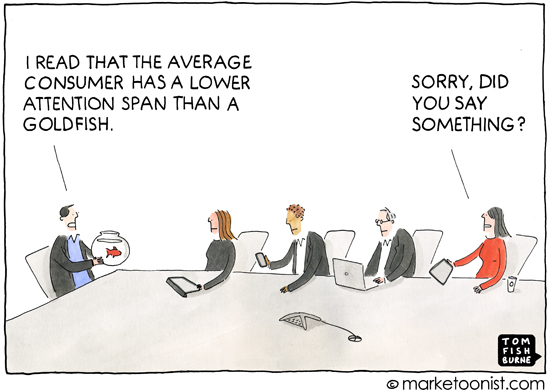A brand could be defined as a perception in the mind of a consumer, based on his/her/others’ experiences. These experiences could be either of the product/service itself, or its marketing communication. Earlier, in a post in a different context, I had alluded to the framework of choice during consumption. To elaborate, what are the factors that influence a customer’s decision to buy/not buy? The basic 4Ps of the marketing mix cover a lot of ground in this regard. But it does not really acknowledge (even when it is extended to 7Ps) the one thing that is increasingly becoming the most scarce commodity – time.

Steven Wastie’s Periodic Table of Marketing Signals is a fantastic resource in terms of what it sets out to do – a framework of metrics for measuring the impact of marketing activities. But it also made me think – if these are the signals we should measure, imagine the number of customer interactions that are happening online and offline! It is no wonder that in what Colin Kelley calls Marketing 3.0, machines are becoming smarter than marketers. When consumers are flooded with prevailing volumes of marketing communication, messaging that is uniquely crafted for them (by machines using data to analyse needs) would obviously be more appealing. There is a time factor at play there, just as it is there in customer service bots and automated marketing. Convenience for the customer, speed and scale in predictive marketing communication, leading to better revenue. Pretty much the core idea of programmatic. What’s not to like? Of course, the execution leaves a lot to be desired, and there’s fraud, but the concept remains solid.
Getting back to time, the growth engine our time – capitalism – loves scale. And I’d argue that scale tends to commoditisation. Take one of the best examples of ‘special’ – the iPhone – and look at where it now is in the scheme of smartphones. In the era of commoditisation, one of the most difficult ‘payments’ to get the consumer to do is paying attention! In Faris’ insightful post, he points out that we might be approaching ‘peak attention’, and attention as he rightfully points out is a zero sum game. Towards the end of the post, he writes on how we have to find untapped resources – he cites intention (attributed to Doc Searls) as an example.
However, I wonder if in brand marketing, our thoughts are being held captive by the growth engine and restricted by its concepts of scale and scarcity thinking . Maybe, if we step out of these constraints, there are alternate paths. One such is what exists in my drafts as “brand as a worldview”. More on that in a bit.
